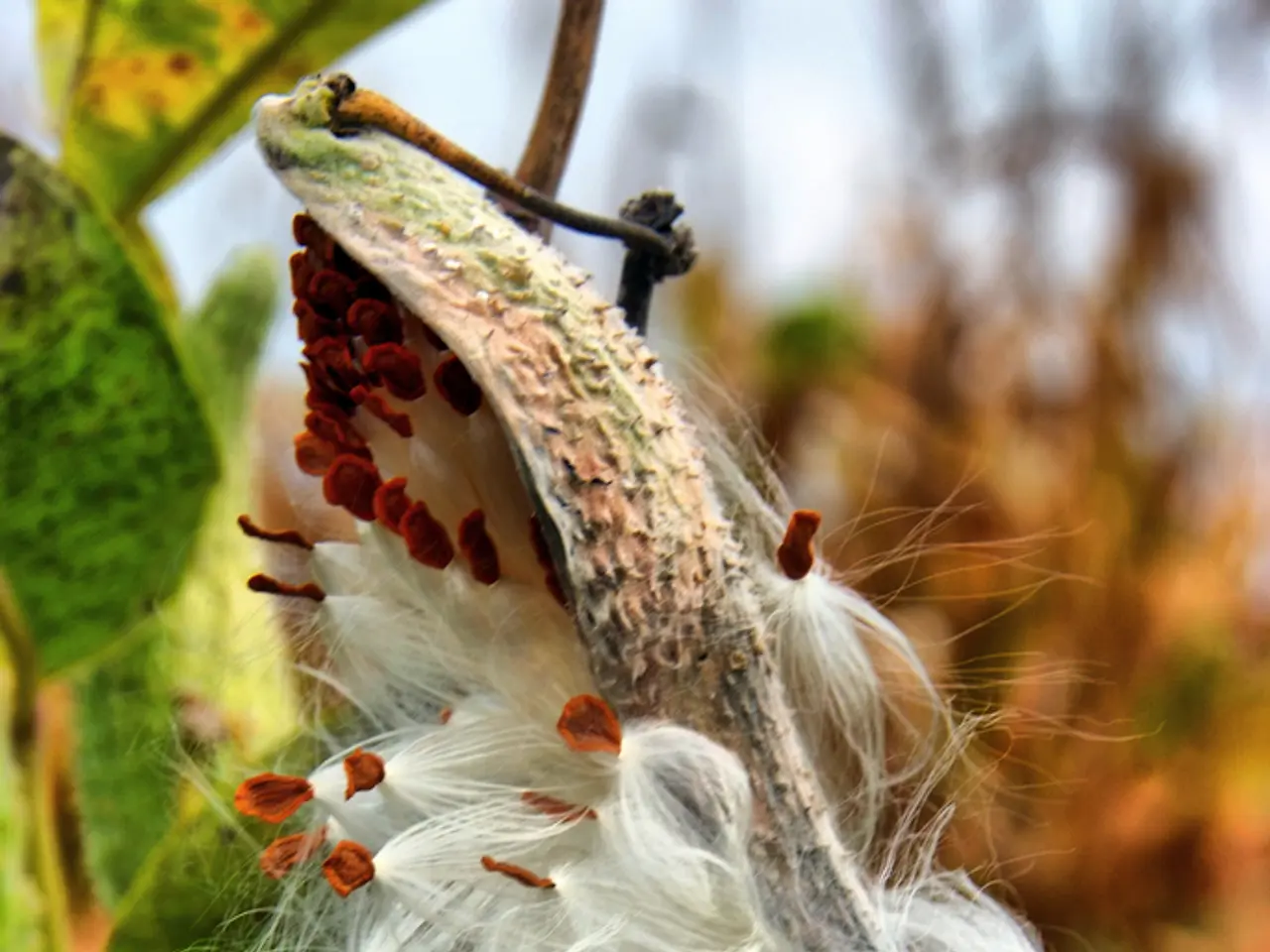Ensuring Greenery with Burlap Landscape Materials
Burlap landscape fabric, a coarse, woven cloth made from natural fibers, is gaining popularity in gardening circles for its numerous benefits. This biodegradable material offers a range of advantages over traditional plastic landscape fabrics, making it an eco-friendly choice for many gardeners.
Weed Control and Soil Protection
In the gardening technique known as sheet mulching, burlap fabric acts as a barrier, preventing weeds from growing by blocking sunlight and hindering their access to the soil. This physical barrier reduces the need for chemical weed control methods, making it an attractive option for organic gardening.
Additionally, burlap fabric aids in moisture control. It allows water to permeate through its fibers while reducing the rate of evaporation, helping to retain moisture in the soil and ensuring a consistent supply even during dry periods. This property makes burlap landscape fabric beneficial in arid or drought-prone regions for water conservation.
Soil Enrichment and Moisture Retention
As the burlap decomposes in sheet mulching, it creates air pockets in the soil, promoting better drainage and root growth. Over time, it gradually decomposes, adding organic matter to the soil as it breaks down, enriching the soil with nutrients.
Environmental Impact
Burlap naturally decomposes within 14–24 months, enriching the soil with nutrient-rich humus as it breaks down, which benefits soil health and organic matter content. In contrast, plastic landscape fabrics, typically made from polypropylene, persist in landfills for over 300 years and do not contribute organic matter back to the soil.
The carbon footprint of burlap is also significantly lower, emitting 1.8 kg CO₂-e per 100 m² installed versus 6.4 kg for synthetic fabric—a 72% reduction.
Choosing the Right Fabric
Functionally, burlap is preferred for annual crop rotations, organic gardening, and erosion control on slopes due to its natural texture and soil-building properties. Plastic landscape fabric, with a longer lifespan (5-10 years), is more suitable for long-term perennial beds and high-traffic or rodent-prone areas where toughness is required. However, plastic fabric's resistance to degradation means it must be carefully disposed of to avoid long-term environmental harm.
In summary, choose burlap for short-term, eco-conscious gardening projects where soil vitality and compostability matter. Select plastic fabric for durability and longer-term weed control, but be mindful of its environmental impact and disposal challenges.
Additional Benefits
Burlap landscape fabric also serves as a protective layer for soil erosion control, preventing soil particles from being washed or blown away during heavy rain or wind. Furthermore, it deters burrowing pests such as rodents and insects, offering an additional layer of protection for your plants.
When wrapping plants in burlap fabric for sheet mulching, it's crucial to choose suitable plant species compatible with the intended environment and climate conditions.
In conclusion, burlap landscape fabric is an environmentally friendly alternative to plastic landscape fabric, offering numerous benefits for gardening projects, including weed control, moisture conservation, soil protection, and soil enrichment.
Burlap landscape fabric's application extends beyond its use in traditional gardening, finding a place within home-and-garden lifestyle as a versatile tool for homeowners seeking an eco-friendly option. Its ability to create air pockets, improve soil health, and retain moisture makes it an essential component in the home-and-garden setting, enhancing the overall lifestyle and well-being of the garden. Moreover, the fabric's capacity to deter burrowing pests and prevent soil erosion further supports the sustainable home-and-garden lifestyle.




